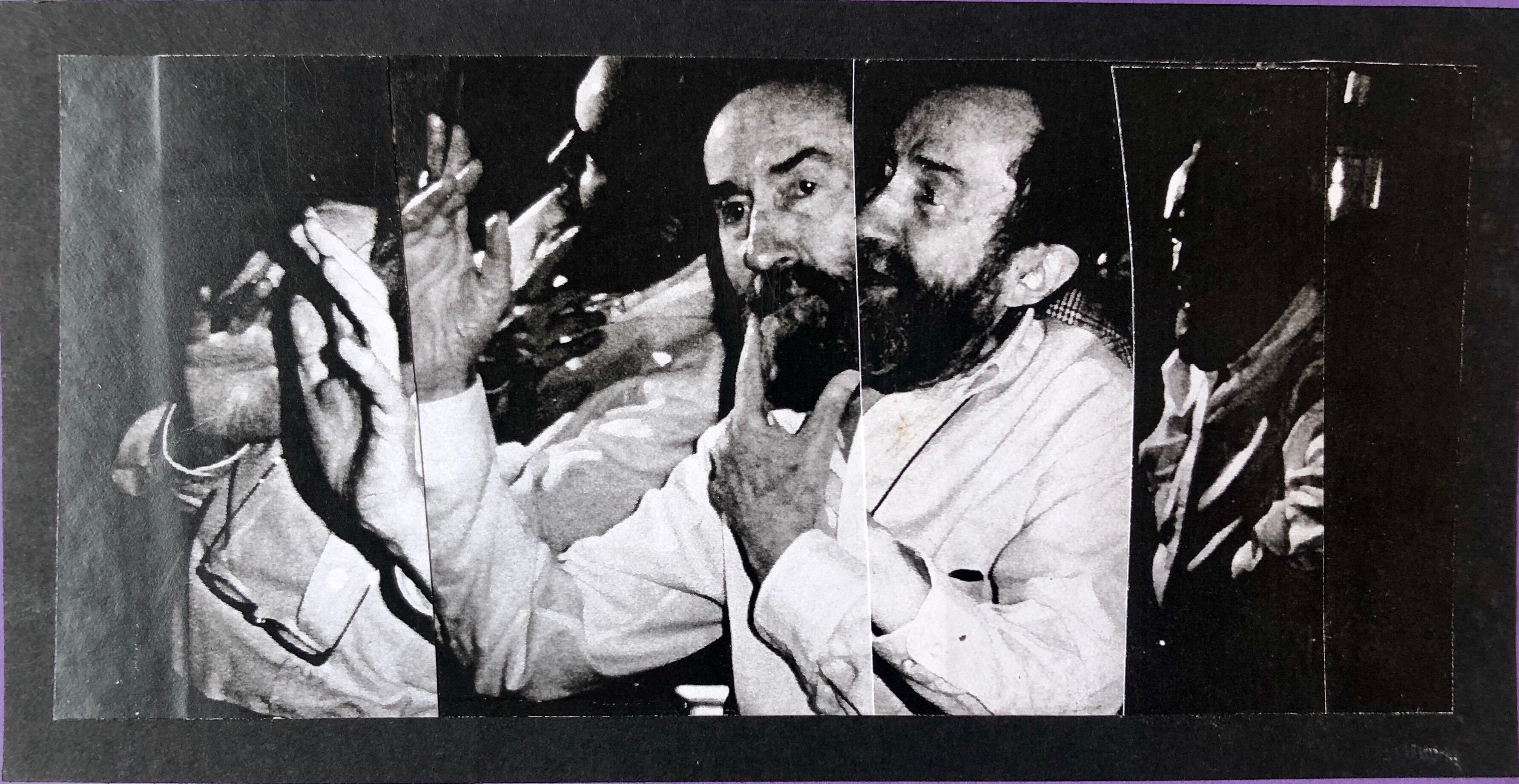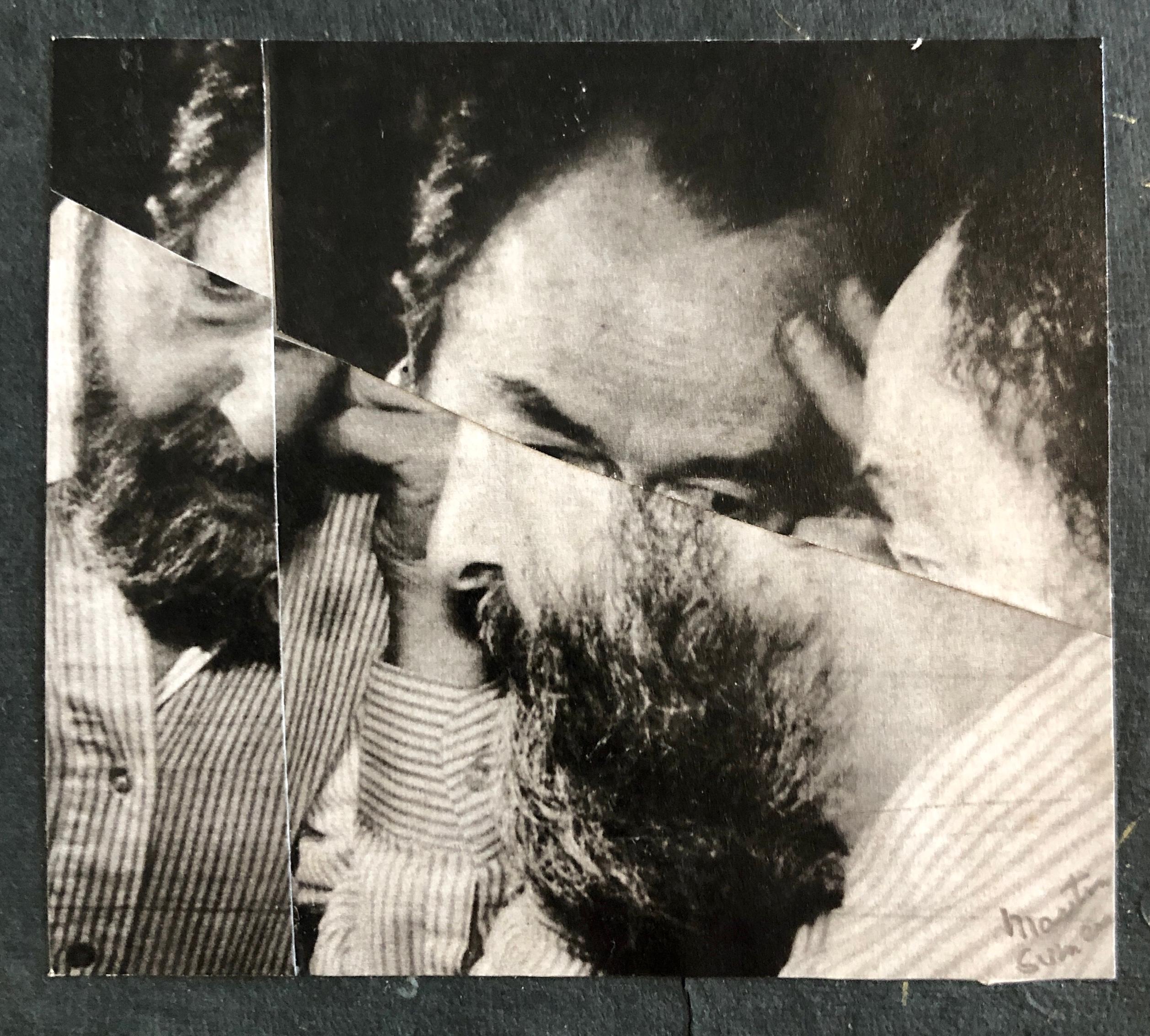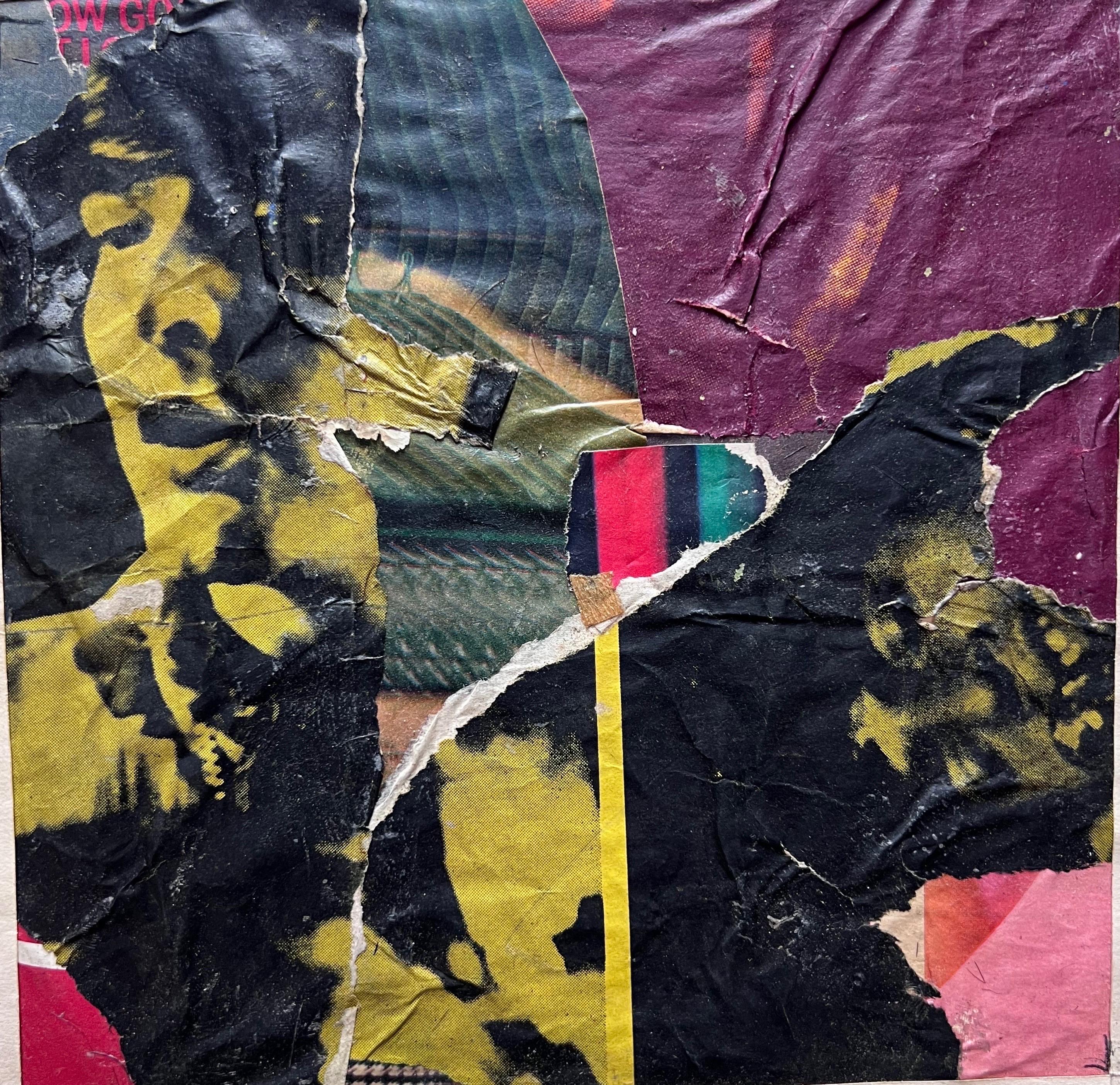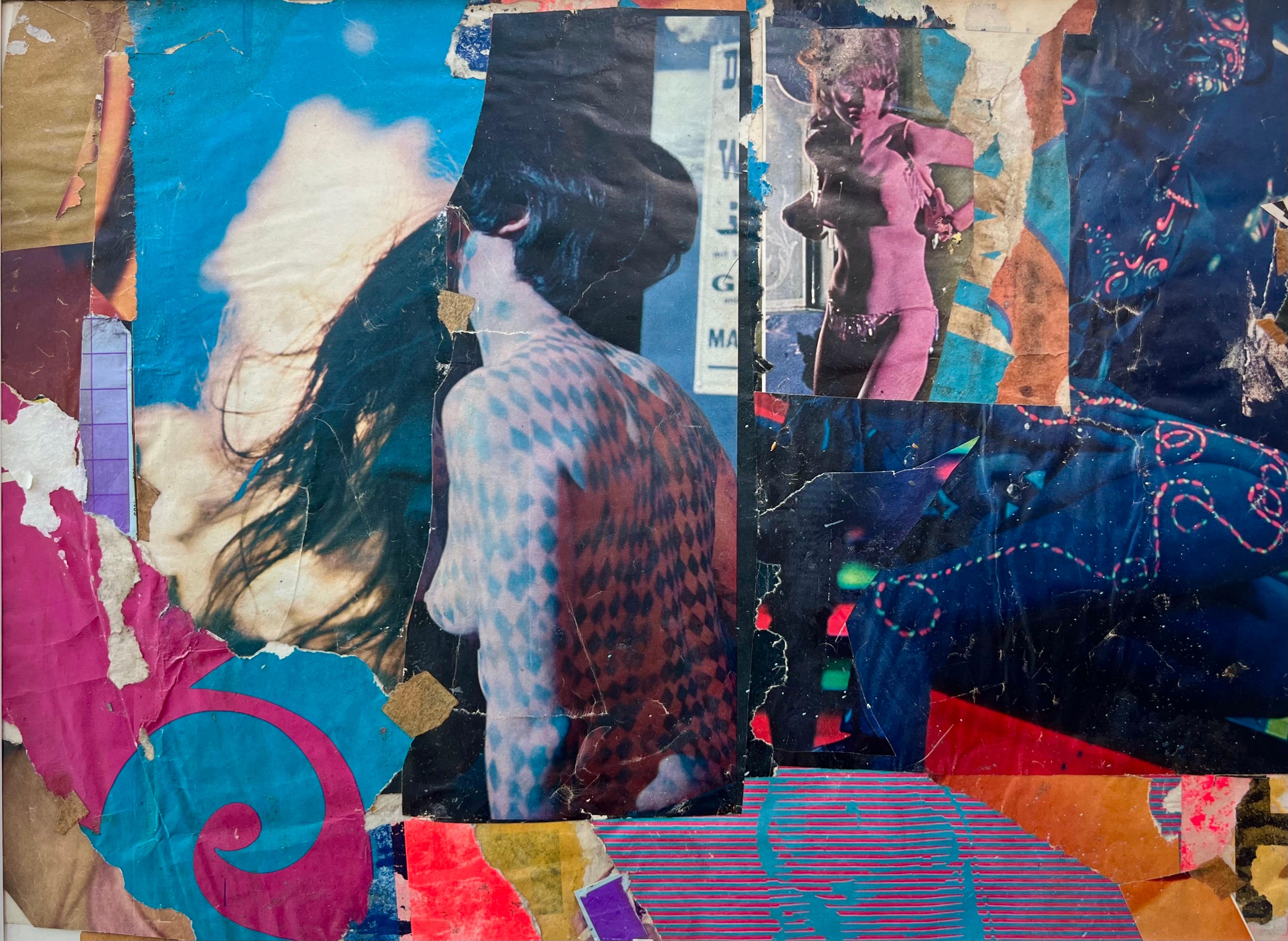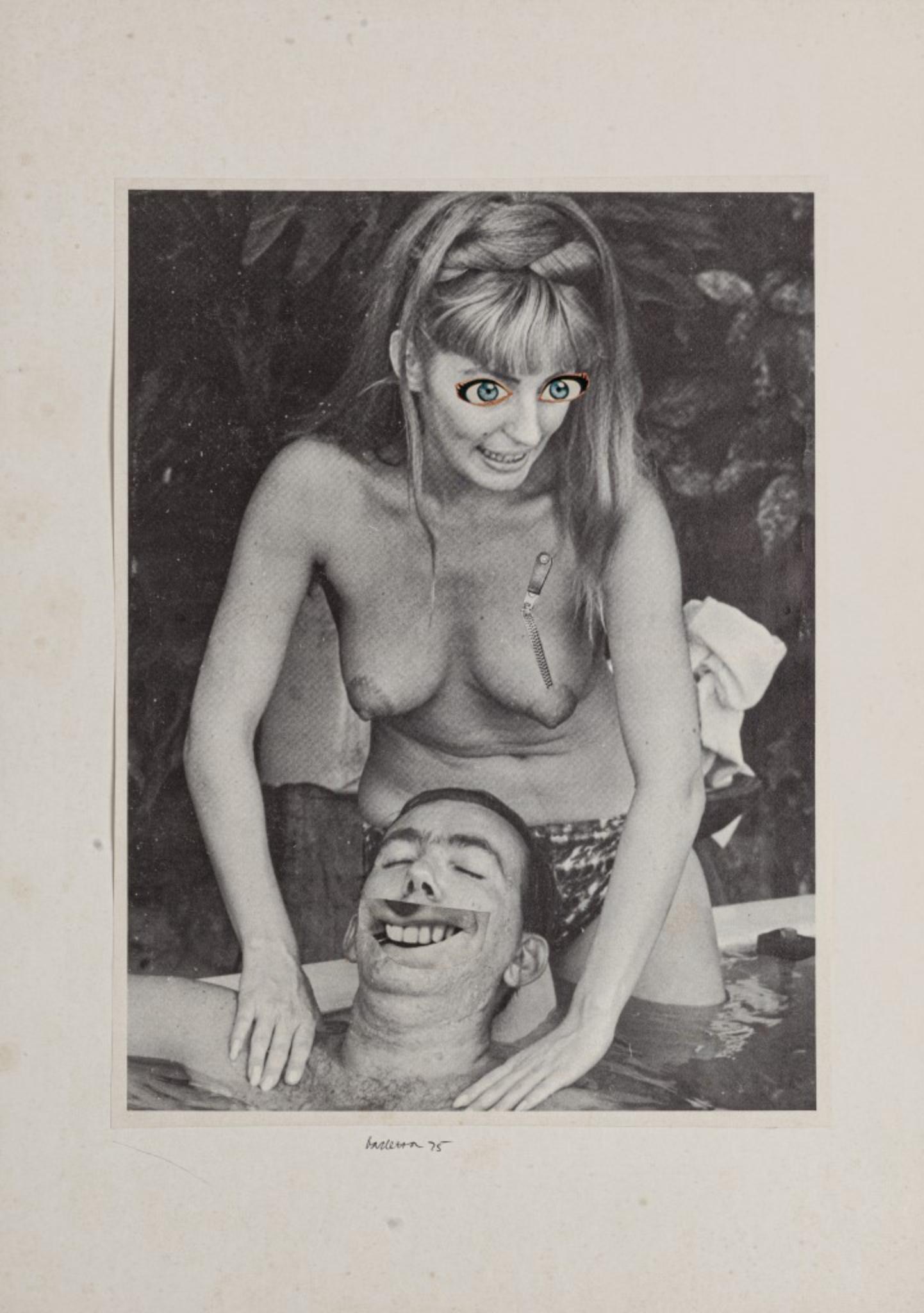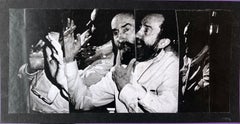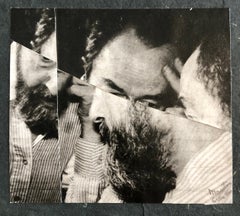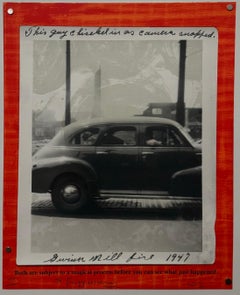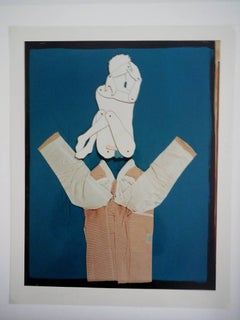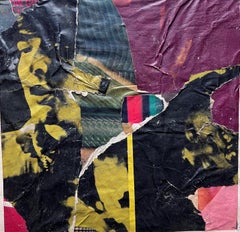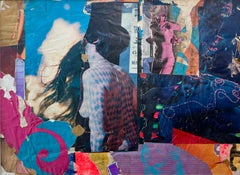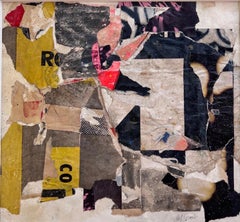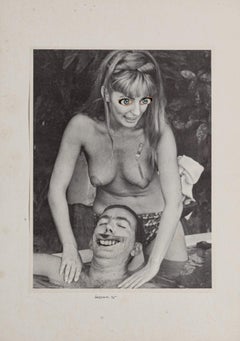Items Similar to Vintage Abstract Expressionist Hyman Bloom Photo Collage Assemblage Photograph
Want more images or videos?
Request additional images or videos from the seller
1 of 7
Martin SumersVintage Abstract Expressionist Hyman Bloom Photo Collage Assemblage Photograph1998
1998
$1,800
£1,376.25
€1,575.35
CA$2,538.22
A$2,763.13
CHF 1,475.03
MX$33,357.37
NOK 18,546.66
SEK 17,237.90
DKK 11,765.61
About the Item
This is a unique original collage, decoupage style of Jiri Kolar, This is an exceptional artwork which was part of a collaboration between Hyman Bloom and fellow artist and his very good friend Martin Sumers. This is pencil signed by Martin Sumers.
Provenance: Acquired from the Sumers estate collection.
Hyman Bloom (March 29, 1913 – August 26, 2009) was a Latvian-born American painter. His work was influenced by his Jewish heritage and Eastern religions as well as by artists including Altdorfer, Grünewald, Caravaggio, Rembrandt, Blake, Bresdin, James Ensor and Chaim Soutine. He first came to prominence when his work was included in the 1942 Museum of Modern Art exhibition "Americans 1942 -- 18 Artists from 9 States". MoMA purchased 2 paintings from the exhibition and Time magazine singled him out as a "striking discovery" in their exhibition review.
His work was selected for both the 1948 and 1950 Venice Biennale exhibitions and his 1954 retrospective traveled from Boston's Institute of Contemporary Art to the Albright Gallery and the de Young Museum before closing out at The Whitney Museum of American Art in 1955. In a 1954 interview with Yale art professor Bernard Chaet, Willem de Kooning indicated that he and Jackson Pollock both considered Bloom to be “America’s first abstract expressionist”, a label that Bloom would disavow. Starting in the mid 1950s his work began to shift more towards works on paper and he exclusively focused on drawing throughout the 1960s, returning to painting in 1971. He continued both drawing and painting until his death in 2009 at the age of 9
Hyman Bloom (né Melamed) was born into an orthodox Jewish family in the tiny Jewish village of Brunavišķi in what is now Latvia, then part of the Russian Empire
At a young age Bloom planned to become a rabbi, but his family could not find a suitable teacher. In the eighth grade he received a scholarship to a program for gifted high school students at the Museum of Fine Arts. He attended the Boston High School of Commerce, which was near the museum. He also took art classes at the West End Community Center, a settlement house. The classes were taught by Harold Zimmerman, a student at the School of the Museum of Fine Arts, who also taught the young Jack Levine at another settlement house in Roxbury. When Bloom was fifteen, he and Levine began studying with a well-known Harvard art professor, Denman Ross, who rented a studio for the purpose and paid the boys a weekly stipend to enable them to continue their studies rather than take jobs to support their families.
He took Bloom and Levine on a field trip to the Museum of Modern Art in New York, where Bloom was impressed by the work of Rouault and Soutine and began experimenting with their expressive painting styles.
In the 1930s Bloom worked sporadically for the Public Works of Art Project and the Federal Art Project (WPA), He shared a studio in the South End with Levine and another artist, Betty Chase. It was during this period that he developed a lifelong interest in Eastern philosophy and music, and in Theosophy.
He first received national attention in 1942 when thirteen of his paintings were included in the Museum of Modern Art (MoMA) exhibition Americans 1942: 18 Artists from 9 States, curated by Dorothy Miller. MoMA purchased two of his paintings from that exhibition, and he was featured in Time magazine. The titles of his paintings in the exhibition reflect some of his recurring themes. Two were titled The Synagogue, another, Jew with the Torah; Bloom was actually criticized by one reviewer for including "stereotypical" Jewish images. He also had two paintings titled The Christmas Tree, and another titled The Chandelier, both subjects he returned to repeatedly. Another, Skeleton (c. 1936), was followed by a series of cadaver paintings in the forties, and The Fish (c. 1936) was one of many paintings and drawings of fish he created over the course of his career.
Bloom was associated at first with the growing Abstract Expressionist movement. Willem de Kooning and Jackson Pollock, who first saw Bloom's work at the MoMA exhibition, considered Bloom "the first Abstract Expressionist artist in America." In 1950 he was chosen, along with the likes of de Kooning, Pollock, and Arshile Gorky, to represent the United States at the Venice Biennale. That same year Elaine de Kooning wrote about Bloom in ARTnews, noting that in paintings such as The Harpies, his work approached total abstraction: "the whole impact is carried in the boiling action of the pigment". In 1951 Thomas B. Hess reproduced Bloom's Archaeological Treasure in his first book, Abstract Painting: Background and American Phase, along with works by Picasso, Pollock, and others. Both de Kooning and Hess remarked on Bloom's expressive paint handling, a key characteristic of Abstract Expressionist painting.
As abstract expressionism dominated the American art world, Bloom became disenchanted with it, calling it "emotional catharsis, with no intellectual basis." In addition, instead of moving to New York to pursue his career, he opted to stay in Boston. As a result he fell out of favor with critics and never achieved the kind of fame that Pollock and others did. He disliked self-promotion and never placed much value on critical acclaim.
Many of Bloom's paintings feature rabbis, usually holding the Torah. According to Bloom, his intentions were more artistic than religious. He began questioning his Jewish faith early in life, and painted rabbis, he claimed, because that was what he knew. Over the course of his career he produced dozens of paintings of rabbis, some of whom bore no small resemblance to himself. When asked if they were self-portraits, he replied cryptically, "When did I ever paint anything else? The Fuller Museum presented a full retrospective of his work in 1996. Another was organized by the National Academy of Design in New York in 2002.
His work is included in the collections of the Museum of Modern Art, the Boston Museum of Fine Arts, the Art Institute of Chicago, the Whitney Museum of American Art, the Smithsonian's Hirshhorn Museum, the National Academy of Design, and many others. Hyman Bloom: The Beauty of All Things, a film about the artist's life and work, was released in October 2009.
Honors and awards
Critic's Choice Award from the Cincinnati Museum of Art for Christmas Tree, 1945
Guggenheim fellowship, 1949
Academy Award in Art from the American Academy of Arts and Letters, 1953
Ford Foundation fellowship, 1959
Elected to the American Academy of Arts and Letters, 1974
Elected to the National Academy of Design, 1984
Thomas R. Proctor Prize for Jew with Torah from the National Academy of Design, 1999
Martin Sumers, painter, born in New York City, 1922, studied in University of Pennsylvania.
Solo Exhibits: Art Fair Gallery; Nordness Gallery; Art Fair Gallery drawing ; Graphics
Group Exhibits: Aspects Gallery 1960; Art Fair Gallery 1960-1967; Hudson River Museum 1960; Montclair Art Museum 1964, 1967; New York Worlds Fair 1965; New Jersey State Museum State Annuals 1965, 1966, 1967; The Pratt Center for Contemporary Printmaking 1966; Forum Gallery, Sculpture; Art Fair Gallery Sculpture 1968; Art Center of Northern New Jersey 1968; American Academy of Arts and Letters 1968; Art in Park in Paterson NJ, Sculpture, 2nd. prize 1970
Holdings : New Jersey State Museum; Butler Institute of American Art; Roanoke Fine Arts Center; Housatonic College; Pen Morton College; University of North Carolina; Cornell College; Cedar Rapids Art Center; University of Miami; Slater Memorial Gallery in CT; Smith College in MA; Brandeis Rose Art Museum; Rollins College in Winter Park, FL; De Cordova Museum in Lincoln, NE; Albrecht Gallery in St. Joseph, MO; Norfolk Museum of Arts and Sciences; State University of New York; State University College in Potsdam, NY; St. Laurence University; Evansville Museum of Arts and Sciences; Canton Art Institute; Russell Sage College in Albany, NY
- Creator:Martin Sumers (1922, American)
- Creation Year:1998
- Dimensions:Height: 5.63 in (14.31 cm)Width: 6.5 in (16.51 cm)
- Medium:
- Movement & Style:
- Period:
- Condition:Good. Minor wear. Never framed.
- Gallery Location:Surfside, FL
- Reference Number:1stDibs: LU38214438042
About the Seller
4.9
Platinum Seller
Premium sellers with a 4.7+ rating and 24-hour response times
Established in 1995
1stDibs seller since 2014
1,843 sales on 1stDibs
Typical response time: 1 hour
- ShippingRetrieving quote...Shipping from: Surfside, FL
- Return Policy
More From This Seller
View AllVintage Abstract Expressionist Hyman Bloom Photo Collage Assemblage Photograph
By Martin Sumers
Located in Surfside, FL
This is a unique original collage, decoupage style of Jiri Kolar, This is an exceptional artwork which was part of a collaboration between Hyman Bloom and fellow artist and his very ...
Category
20th Century Modern Animal Prints
Materials
Paper, Photographic Paper
Vintage Abstract Expressionist Hyman Bloom Photo Collage Assemblage Photograph
By Martin Sumers
Located in Surfside, FL
This is a unique original collage, decoupage style of Jiri Kolar, This is an exceptional artwork which was part of a collaboration between Hyman Bloom and fellow artist and his very ...
Category
1990s Modern Abstract Photography
Materials
Paper, Photographic Paper
Conceptual Artist Allen Ruppersberg Hand Printed Lithograph Prints & Photographs
By Allen Ruppersberg
Located in Surfside, FL
Allen Ruppersberg (American, 1944-)
Lithograph, Mixed media
From the Top Ten Historical Similarities (and Differences) Between Prints and Photographs.
This sale is of one print not t...
Category
2010s Conceptual Abstract Photography
Materials
Mixed Media, Lithograph
Large Harry Bowers Vintage C Print Photograph From Ten Photographs Fashion Photo
By Harry Bowers
Located in Surfside, FL
HARRY BOWERS
T E N P H O T O G R A P H S
I DON'T LOOK FOR PHOTOGRAPHS I INVENT THEM
I recall my first meeting with Harry Bowers in California a few years ago. As he produc...
Category
1980s Arte Povera Photography
Materials
Photographic Paper, C Print
Rare Large Harry Bowers Vintage C Print Photograph Ten Photographs Fashion Photo
By Harry Bowers
Located in Surfside, FL
HARRY BOWERS
T E N P H O T O G R A P H S
I DON'T LOOK FOR PHOTOGRAPHS I INVENT THEM
I recall my first meeting with Harry Bowers in California a few years ago. As he produc...
Category
1980s Pop Art Photography
Materials
Photographic Paper
Vintage Silver Gelatin Photograph Tibor de Nagy Portrait Photo NYC Gallery
By Fred McDarrah
Located in Surfside, FL
Tibor De Nagy - October 11 1960
Photographer is Fred McDarrah
Over a 50-year span, McDarrah documented the rise of the Beat Generation, the city’s postmodern art movement, its off-off-Broadway actors, troubadours, politicians, agitators and social protests.
Fred captured Jack Kerouac frolicking with women at a New Year’s bash in 1958, Andy Warhol adjusting a movie-camera lens in his silver-covered factory, and Bob Dylan offering a salute of recognition outside Sheridan Square near the Voice’s old office.
Not just a social chronicler, McDarrah was a great photo-journalist.
For years, McDarrah was the Voice's only photographer and, for decades, he ran the Voice’s photo department, where he helped train dozens of young photographers, including James Hamilton, Sylvia Plachy, Robin Holland...
Category
1960s American Modern Black and White Photography
Materials
Silver Gelatin
You May Also Like
Original Vintage Collage By Wayne Timm #9
By Wayne Timm
Located in West Palm Beach, FL
Paper and Adhesive collage by Wayne Timm. Image or mat opening measures 8 x 8 in.
In the 1960's, Wayne Timm rubbed elbows with the likes of Warhol, Lichtenstein, Rauchenburg and ma...
Category
1960s Abstract Mixed Media
Materials
Paper, Adhesive, Magazine Paper
Original Vintage Collage By Wayne Timm #16
By Wayne Timm
Located in West Palm Beach, FL
Paper and Adhesive collage by Wayne Timm. Image or mat opening measures 11.75x 16 in.
In the 1960's, Wayne Timm rubbed elbows with the likes of Warhol, Lichtenstein, Rauchenburg an...
Category
1960s Abstract Mixed Media
Materials
Paper, Adhesive, Magazine Paper
Original Vintage Collage by Wayne Timm #7
By Wayne Timm
Located in West Palm Beach, FL
Vintage Paper and Adhesive collage by Wayne Timm. (Mat opening) or Image measures 11 3/4 x 12.5 in.
In the 1960's, Wayne Timm rubbed elbows with the likes of Warhol, Lichtenstein, ...
Category
1960s Abstract Mixed Media
Materials
Paper, Adhesive, Magazine Paper
Collage - Collage by Sergio Barletta - 1975
By Sergio Barletta
Located in Roma, IT
Collage is an original work by Sergio Barletta.
A wonderful collage glued on ivory-colored cardboard with the great touch of the Italian Pop artist.
Signed and dated in pen on the ...
Category
1970s Contemporary Mixed Media
Materials
Mixed Media
Historical Photo - Vintage Photo - mid-20th Century
Located in Roma, IT
Historical Photo is a black and white vintage photo.
It belongs to a historical album including historical moments, royal families, and political events, meticulously captured.
The...
Category
Mid-20th Century Contemporary Figurative Photography
Materials
Photographic Paper
Collage - Collage by Sergio Barletta - 1975
By Sergio Barletta
Located in Roma, IT
Collage is an original work by Sergio Barletta.
A wonderful collage on paper with the great touch of the Italian Pop artist.
Signed and dated in pen on the lower center.
Very good...
Category
1970s Contemporary Mixed Media
Materials
Mixed Media
$463 Sale Price
35% Off
More Ways To Browse
Sumer Martin
Puffin Prints
Stan Washburn
Thomas Hart Benton Exhibition Poster
Woodblock Bird Prints
Blue Dog Tiffany
Chromolithograph Eggs
Icelandic Falcon
Le Picador
George Rodrigue Blue Dog Paintings
Jeu De La Cape
New Orleans Jazz Festival
Ori Reisman
Owl Woodcut
Pablo Picasso Le Picador Ii
Pablo Picasso Pigeons
Prang Lithograph
Vintage Forest Service
